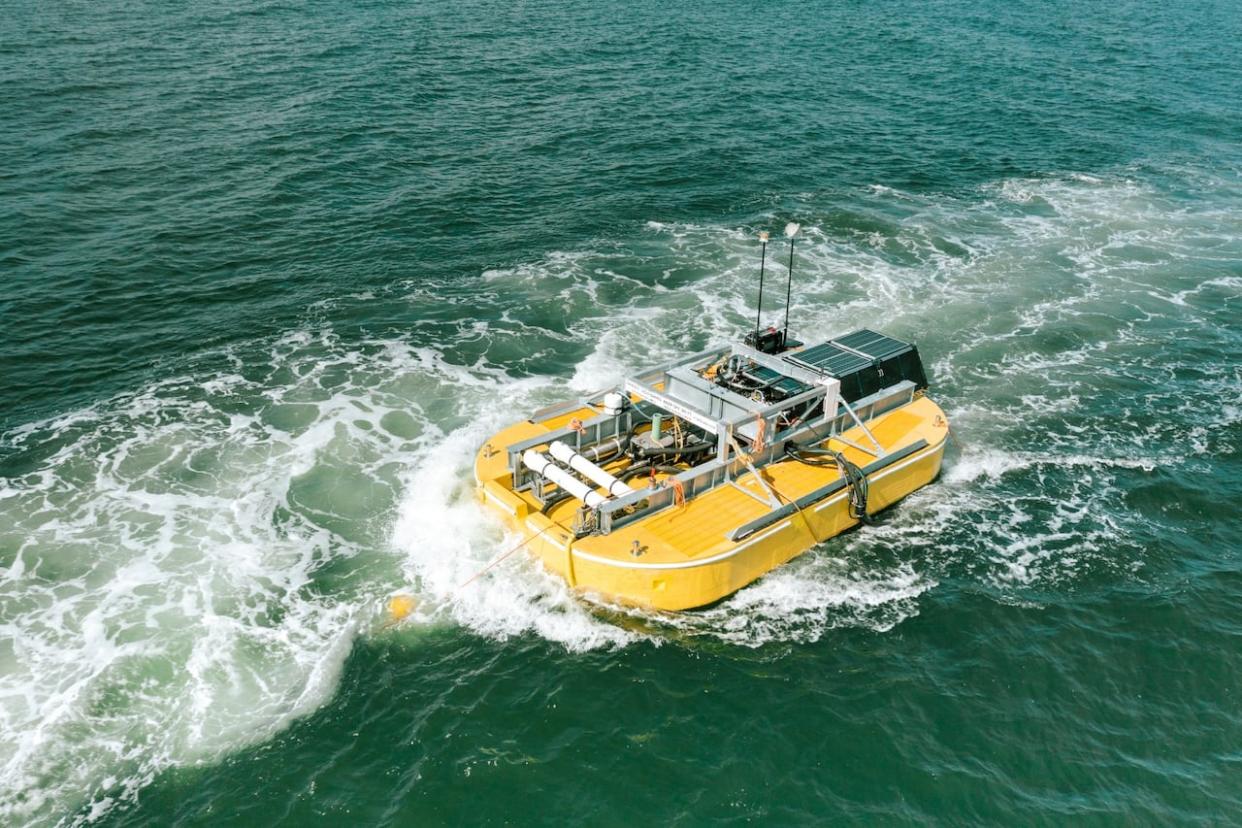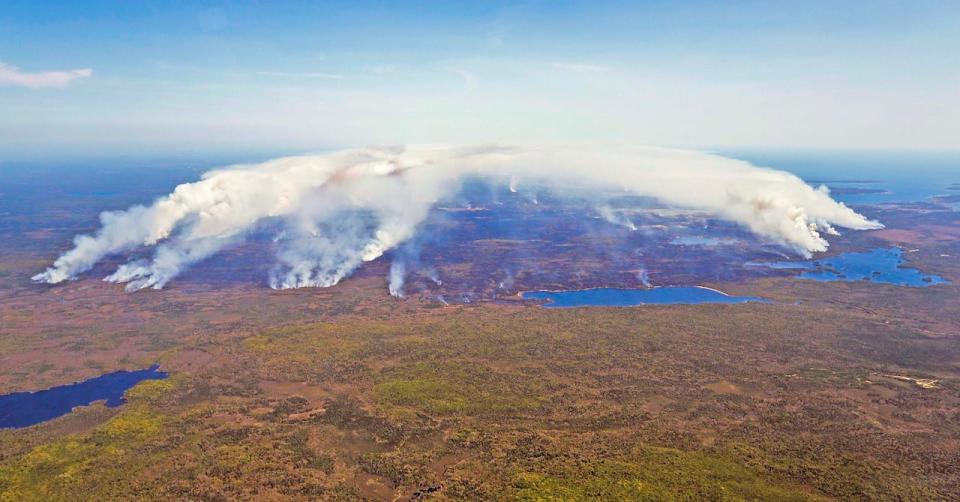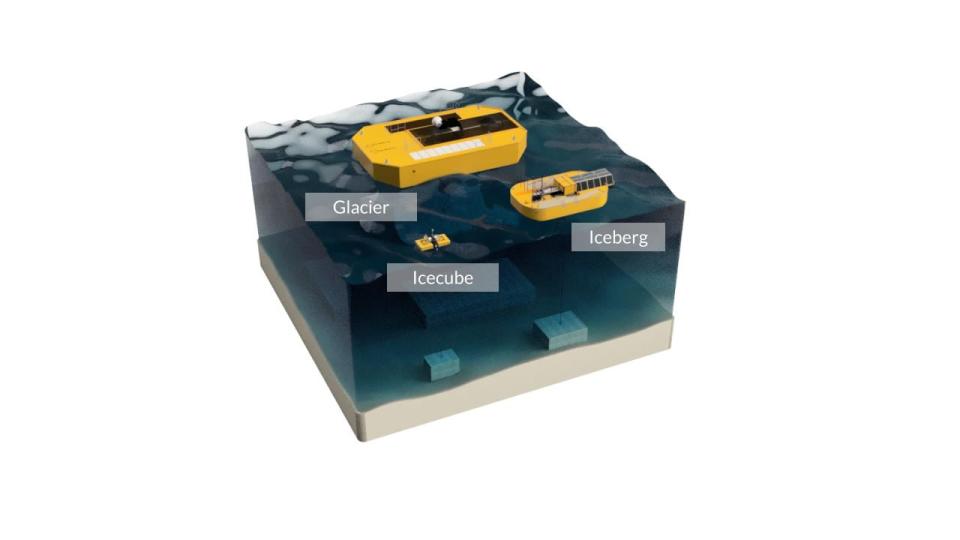After years of drought and wells running dry, this Nova Scotia community is looking to the sea

For most of the decades he's been a volunteer firefighter, Walter Scott, chief of the Island and Barrington Passage Volunteer Fire Department, had never seen firefighters asked to help out with water shortages.
But that changed in 2016 during an unusually dry summer when the fire department found itself delivering water to dozens of households in southwestern Nova Scotia whose wells had run dry.
"We were doing between 20 and 30 trips with water every week," he says. "Doing two nights of water deliveries every week for probably two months, it got to be very strenuous for the people that were taking part in it."
In the years since then, water shortages have happened repeatedly, posing concerns for Scott who says it puts a worrisome strain on firefighters who are also dealing with other emergencies.

The fire in Shelburne County was the largest wildfire in recorded N.S. history. Fire chief Walter Scott says delivering water, on top of responding to other emergencies like the 2023 wildfires, overtaxed volunteer fire crews. (Communications Nova Scotia)
And as the effects of climate change intensify, the Municipality of Barrington is looking to the sea as it faces threats to its water supply.
The municipality is partnering with a Quebec-based company called Oneka Technologies to test a sustainable approach to desalination, which could potentially see some of the community's drinking water coming from the ocean. The pilot project is set to start in 2024.
While freshwater availability may not feel urgent to all Nova Scotians, particularly after the province's record-breaking rain in July 2023, project participants say it's part of preparing for an uncertain future.
"We should, in general, think proactively to adapt and prepare for a new reality," says Dragan Tutic, Oneka Technologies' founder and CEO. "Adapting instead of reacting will really make it so much easier to prepare for next steps."
Droughts a frequent phenomenon since 2016
As a result of climate change, precipitation is projected to become more unpredictable in Canada, with consequences for water availability. Demand for water is also increasing.
The Barrington area came face to face with that reality in 2016. Some residents who depend on wells because they don't have access to a water utility were left without drinking water, unable to cook, wash or do laundry.
"We had never experienced that before," says Chris Frotten, chief administrative officer of the Municipality of the District of Barrington. "We considered it a local emergency."

A size comparison of the units Oneka Technologies is developing. The Glacier is the unit that is being piloted in Barrington in 2024. CEO Dragan Tutic describes it as 'utility scale.' (Submitted by Oneka Technologies)
The municipality outfitted some of its buildings with washers and dryers and delivered water through the three local volunteer departments.
After drought struck again in 2018, the municipality began thinking of water shortages as a chronic issue and offered financing for residents to upgrade their water supplies.
But in 2020, a third drought prompted the community to look at more systemic changes, including a community water source. Oneka Technologies was looking for community partner and got in touch.
"It was good timing because we were thinking about the future and the long term sustainability of the municipality," says Frotten. "Continuing to provide this assistance year after year… was just not feasible for us and it was putting a huge burden on our volunteer fire department."
Wave-powered desalination
Oneka's pitch to the community is an approach to desalination that uses wave power to turn salt water into fresh water, using a large, floating buoy anchored to the sea floor.
By wobbling with the motion of the waves, the 11-metre-wide buoy sucks in sea water, pressurizes it, and passes it through a membrane to remove the salt, similar to how air passes through a bike pump. Freshwater is then piped to shore.
This addresses one of the core concerns with desalination plants, which require large amounts of electricity or diesel to power motors. That's both expensive and, depending on the power source, polluting. Oneka's design, by contrast, does not require electricity.
Tutic says the design also addresses another concern with desalination plants — the discharge of brine, which is the concentrated saltwater. Unlike a typical plant, which discharges brine from one point, often in a shallow coastal area, Oneka's unit discharges water offshore from multiple drainage points.
Its brine is also 30 to 50 per cent saltier than sea water, compared to up to 150 per cent saltier in a conventional system. "So it's lower concentration and it's really well diffused."
While this project will be the first time Oneka Technologies has deployed a system of this size, which Tutic calls the utility scale, the company has tested smaller systems in the ocean since 2016, in Eastern Passage and Lawrencetown, as well as in Florida and Chile.
Oneka is based in Sherbrooke, Que., but has an office at COVE, the marine tech hub located in Dartmouth.
In Barrington, Frotten says the company has been working with the community for several years, addressing residents' questions about the technology, and the municipality has emphasized the need to protect fishing interests.
"The seafood industry is the backbone of our community and we wouldn't want to participate in the pilot project if it had any negative implications on the industry and [Oneka] were supportive of that from day one."
'Easier to try and solve the problem'
Since the intention of the 2024 deployment is to test how the buoy operates, Frotten says the municipality hasn't yet developed a plan for how water would be distributed in the community.
Nonetheless, he says by partnering on the project, the municipality is able to play a direct role in climate change adaptation both in the community and beyond.
"This is a great fit for the municipality. We're not developing the equipment, we're not building it. But we do have the proper environment landscape to help this organization develop something that potentially addresses a need."
As for Scott at the fire department, he says given the way local conditions are changing, it makes sense to plan ahead.
"If they don't come up with a solution for water, everybody's just going to have to suffer for it," he says. "Easier to try and solve the problem than just let it keep being a problem."
MORE TOP STORIES

